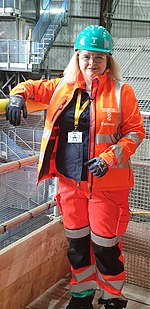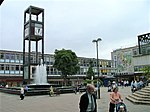Warren Spring Laboratory
Air pollution in the United KingdomLaboratories in the United KingdomResearch institutes in HertfordshireScience and technology in the United Kingdom
Warren Spring Laboratory was a UK government environmental science research centre that operated in Stevenage, Hertfordshire from 1958 until its closure in 1994. Described by New Scientist as "Britain's leading laboratory for environmental research", and by The Times as "one of Europe's most important environmental research centres", it had an international reputation in areas such as air and water pollution, waste management and recycling, land remediation, alternative fuel research, and chemical engineering. In 1994, after some political controversy, the laboratory was closed and merged with AEA Technology to form the National Environmental Technology Centre (NETCEN).
Excerpt from the Wikipedia article Warren Spring Laboratory (License: CC BY-SA 3.0, Authors).Warren Spring Laboratory
Old Knebworth Lane,
Geographical coordinates (GPS) Address Nearby Places Show on map
Geographical coordinates (GPS)
| Latitude | Longitude |
|---|---|
| N 51.88503 ° | E -0.20037 ° |
Address
Old Knebworth Lane
SG2 8DU
England, United Kingdom
Open on Google Maps









